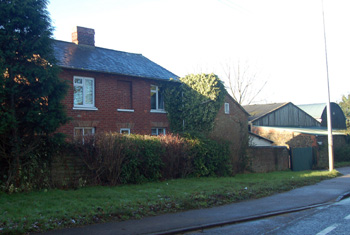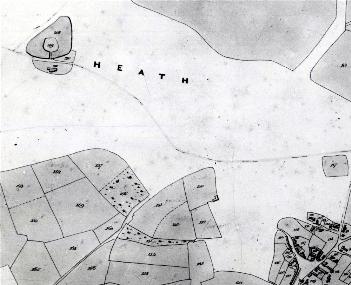Prehistoric Heath and Reach

Checkleywood Farm January 2008
Stone Age
The earliest evidence of human activity in what is now Heath & Reach is a flaked flint knife, from the Neolithic period, found south of Checkleywood Farm.

Heath and Reach water tower December 2008
Bronze Age
A Bronze Age ring ditch has been identified from crop marks on the ridge bearing the water tower overlooking the village [National Monuments Record 346532]. The other Bronze Age evidence from Heath & Reach comes in the form of a small decorated food vessel found when Joseph Arnold & Sons were digging a sand pit at an unidentified spot. James Dyer in The Bedfordshire Archaeological Journal Volume 4 of 1964 (page 73) noted that it had been given as a gift by the pit owner to a man who used it as something to knock his pipe ash into! He later gave it to Torquay Museum [Devon] where it is now displayed. The decoration puts the pot into the early Bronze Age period [NMR 346534].

Craddocks top left, Heath Green bottom right from the 1841 Inclosure map [MA62]
Iron Age
It is possible that an Iron Age enclosure once occupied a thirty acre area known as Craddock's Camp [NMR346518], on what is now largely Leighton Buzzard Golf Club land. James Dyer reported in Bedfordshire Archaeology Volume 2 of 1959 (pages 32 to 33) that it was referred to in 19th century literature but had long since been destroyed and that the only real evidence came from The Victoria County History for Bedfordshire of 1912. The VCH article described that site as resembling Maiden Bower near Dunstable but it had been destroyed around 1790. A sand pit (south of the modern Abbey Walk) was later dug north of the site and James Dyer considered that this probably lay on the old road from Reach to Leighton Buzzard known as Craddock's Lane.
An alternative theory was one suggested by Frederick G.Gurney in the 1920s. He considered it most likely that Craddock's Camp was a Norman motte or castle. Tantalizingly there is a reference to a castle in the court rolls for the Manor of Leighton Buzzard alias Grovebury for October 1406 which is as follows: The Jury were commanded to enquire concerning one acre of land in a close laying between the land of William Shepherde and the land of the Lord which John Ireremay and Richard Alleyn of Rache surrendered into the hands of the Lord to the use of Thomas Caweton whether upon the same acre a Castle was anciently built or not and that the jury say that a Castle was built upon the same acre and for which surrender there fell to the Lord in the name of heriot ten shillings". Of course it is not stated where this was but the fact that Ireremay and Alleyn both came from Reach suggests that the Castle may be Craddocks. Again, it is not clear what is meant by a castle and whether the jury knew that it had been a medieval castle or just knew that there was an earthwork and so applied the term castle loosely.
Before the inclosure of Heath & Reach in the 1840s the area was all heathland with an area of closes in the middle, including one area with a curving boundary, certainly suggestive of an ancient earthwork. The area enclosed by the curved boundary was sub-divided into fields all called Craddock's, with Craddock's Lane running down the eastern side.
Altogether it is felt that the evidence suggests a prehistoric, rather than a Norman origin for Craddock's Camp. The precise date is impossible to say and may have been any time in the neolithic, Bronze Age or Iron Age. It should be noted that the modern private road called Craddocks is some way from the ancient site and is just over the boundary in the civil parish of Leighton Buzzard